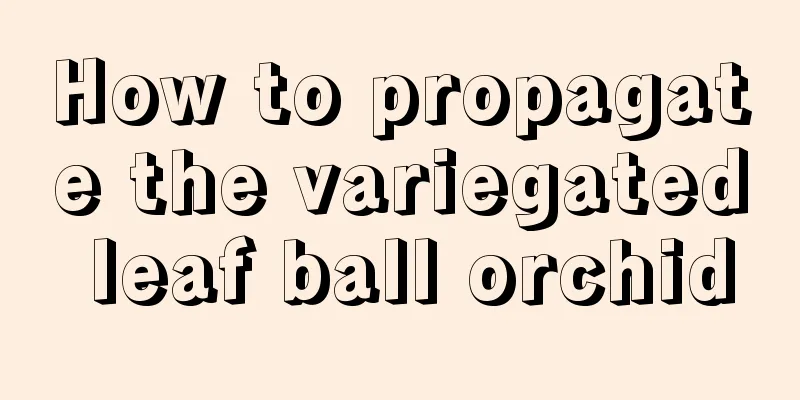How to propagate the variegated leaf ball orchid

1. Cutting propagationThe most commonly used method for propagating variegated Hoya is cuttings, which can be done from May to September. If the temperature is suitable, cuttings can be done all year round. When taking cuttings, first use scissors to cut mature branches with terminal buds. The selected branches must have at least three nodes. Then cut off the leaves at the bottom of the branches, leaving only two or three tender leaves at the tip. Dip the pruned branches in acetic acid for disinfection, then insert them into the prepared soil. Remember to water every day to keep the soil moist. Newly transplanted seedlings should be protected from light and properly shaded to avoid direct sunlight. When the average temperature is above 20℃, the cuttings can take root in about twenty days and are relatively easy to survive. After the seedlings have grown steadily, pay attention to maintenance and carry out regular fertilizer and water management to promote the healthy growth of the variegated ball orchid. 2. Layering propagationPropagation by layering is usually carried out from May to August when the variegated Hoya is growing vigorously. Select a full and thick young vine, press the branch near the top of the vine into the soil to fix it, keep the soil moist, and maintain it properly. New roots will grow from the branch in about half a month. At this time, you can cut off the newly grown roots and transplant them. Keep the seedlings away from light and keep the soil moist. Layering is a relatively fast method of propagation. 3. Seed propagationThe seeds of the variegated Hoya generally begin to mature from late summer, and the seeds will mature until autumn and winter. After the mature seeds in summer and autumn are collected, they can be sown and propagated immediately. If the seeds are collected in late autumn and winter, they need to be properly stored and sown after the temperature rises in the spring of the following year. It is best to choose high-quality and plump seeds when sowing. Keep the soil moist after sowing. Pay attention to proper shading after the seedlings germinate. When three or four leaves grow, they can be transplanted into pots and then carry out regular fertilizer and water management. |
<<: How to propagate tea roses
>>: How to trim a gold diamond
Recommend
How to grow crystal orchid
Crystal Orchid Soil The ghost orchid likes fertil...
Main varieties of heather
Photinia fraseri var. Its pedicels have some soft...
What kind of fertilizer is good for winter melon base fertilizer (base fertilizer application method)
Effect of winter melon base fertilizer Winter mel...
What are the cultivation methods and precautions of variegated trachelospermum
Introduction of Trachelospermum erythrorhizon Var...
Ebony cultivation methods and precautions
1. Flowerpot selection Try to choose a flowerpot ...
How many days is the growing period of lettuce?
There are four stages in the growth process of le...
Sunflower seeds, how many days does it take for sunflower to germinate
1. Sunflower seeds Sunflower seeds are generally ...
How to eat Pingpo
Rice Ball The specific method is to prepare an ap...
When is the best time to prune roses?
Overview of Rose The rose blooms for a long time,...
How to fertilize the Euphorbia obesa
spring Spring is the growing season of the plant,...
Can poppies bloom in the same year?
Poppy Planting and Flowering Generally speaking, ...
When planting seeds and growing flowers, knowing these few tricks will help the buds sprout faster and the seedlings grow stronger
Soaking in water to germinate Soak the seeds in w...
Does Sansevieria remove formaldehyde?
1. Can remove formaldehyde Tiger Piranha can abso...
Is papaya a fruit or a vegetable?
Is papaya a fruit or a vegetable? Papaya is a kin...
The effects and usage of Cistanche deserticola
1. Function 1. It has the effect of nourishing th...









